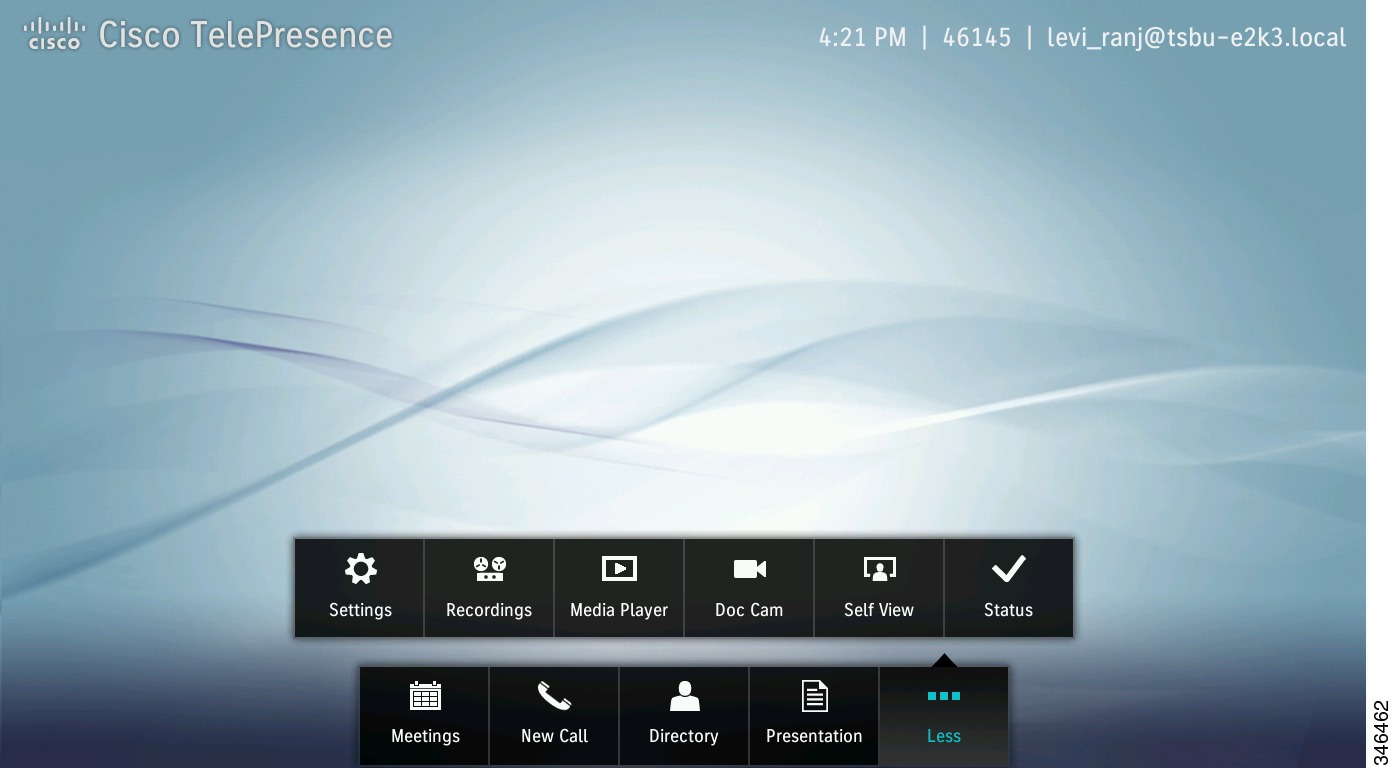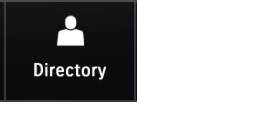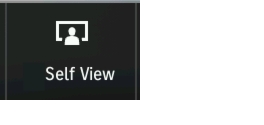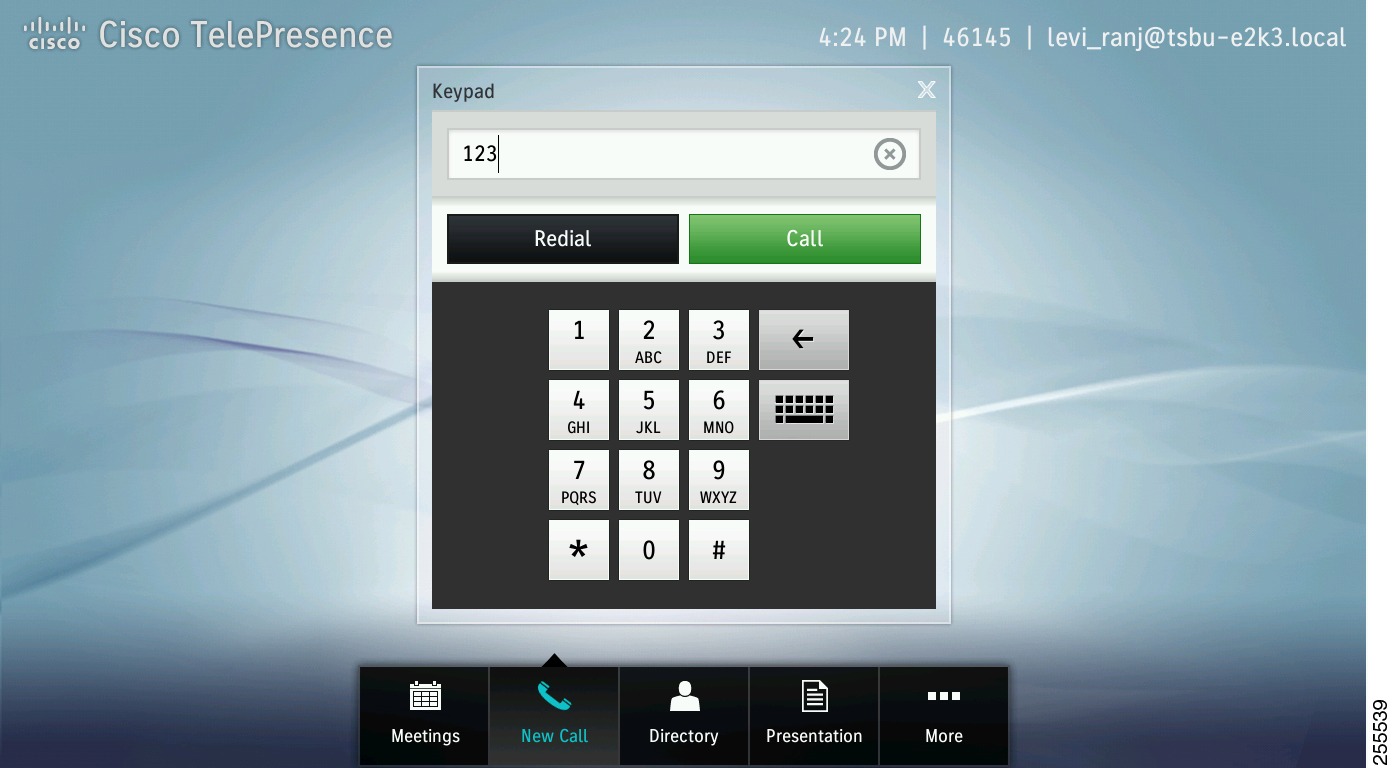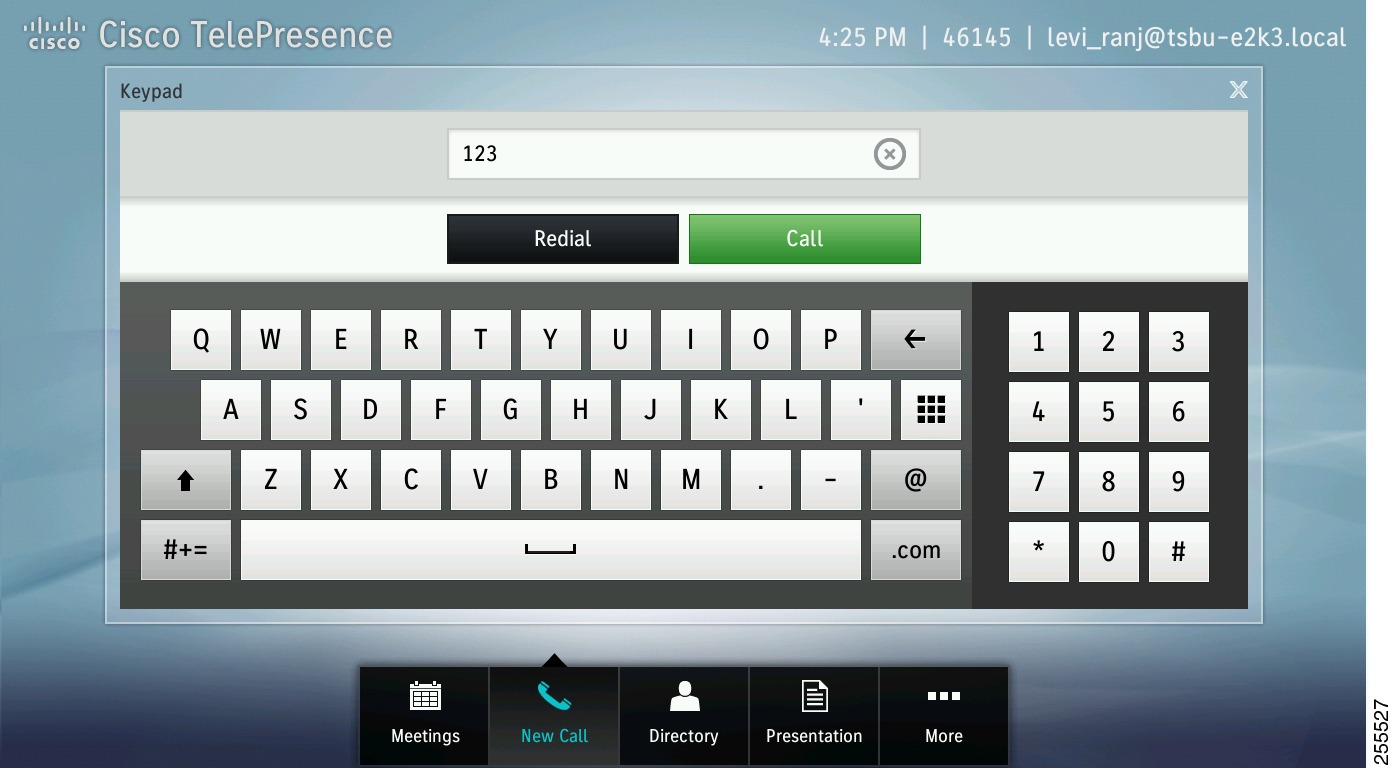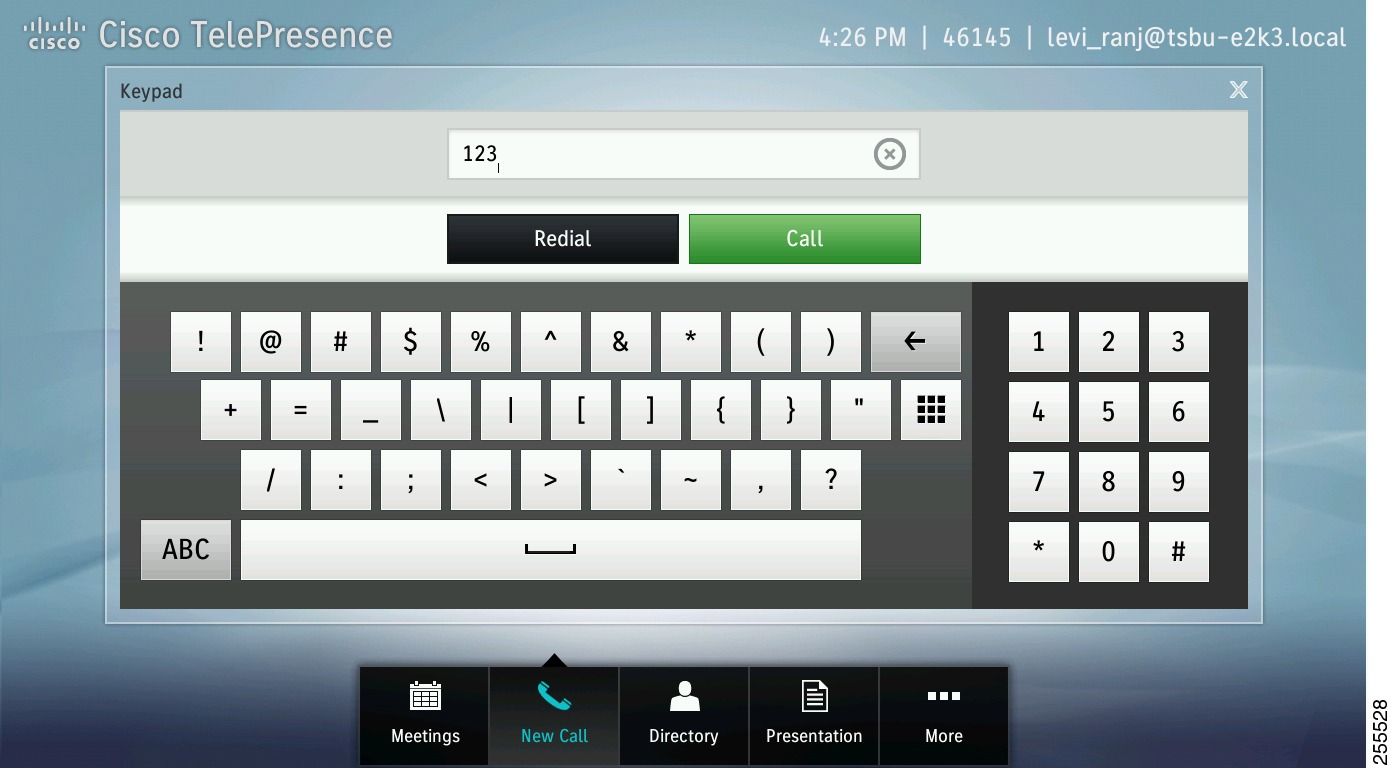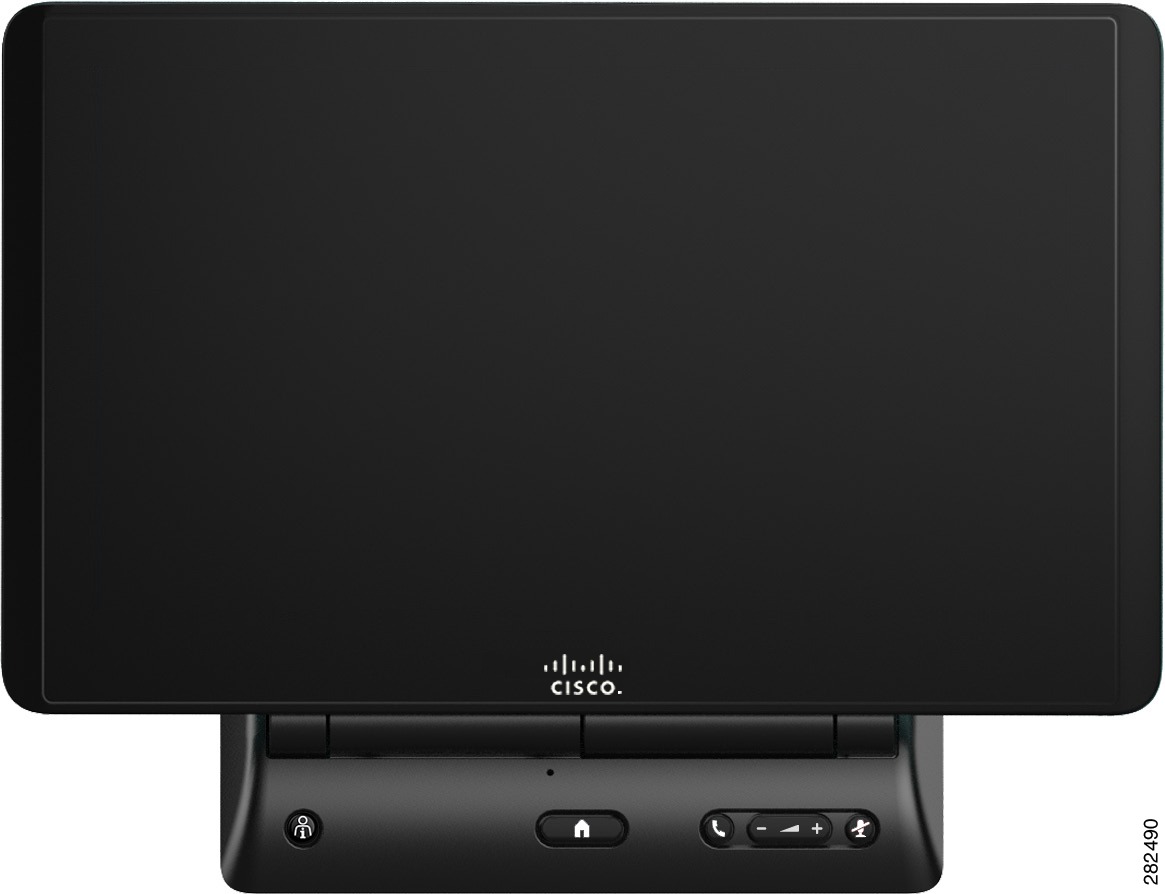

Table Of Contents
Cisco TelePresence Touch 12 Navigation Basics
Primary and Secondary Button Bar
Standard and Special Characters Keyboard
Buttons on the Cisco TelePresence Touch 12 Console
Cisco TelePresence Touch 12 Navigation Basics
Revised: February 2013, OL-28617-01Contents
Use the information in the following sections to help you become familiar with the Cisco TelePresence Touch 12:
•
Primary and Secondary Button Bar
•
Standard and Special Characters Keyboard
•
Buttons on the Cisco TelePresence Touch 12 Console
Primary and Secondary Button Bar
The primary and secondary button bars are the main navigation tools for Cisco TelePresence Touch 12, as shown in Figure 1-1. Buttons appear blue when selected. Table 1-1 describes button functions.
Primary Button Bar
The primary button bar is the default; choose from the following options:
•
More
Secondary Button Bar
Tap the More button to bring up the next set of buttons in the secondary button bar:
Figure 1-1 Cisco TelePresence Touch 12 Primary and Secondary Button Bars
Table 1-1 Cisco TelePresence Touch 12 Primary and Secondary Buttons
Opens the keypad or the keyboard to place a call.
See Using the Keypad and Dialing a URI String Using the Keyboard.
Tap to see a list of scheduled meetings.
Tap to bring up the Directory or Favorites menus to make a call.
TipThe Directory and Favorites tabs are only present if directory or favorites lists have been configured by your administrator. The Keypad tab is always present.
To dismiss the Call window, tap the X in the upper right corner.
See Placing a Call.
Tap to control your meeting presentations including video sharing, PiP placement on screen, and video input sources.
TipPiP control is only available while you are in a call and when a presentation device is being shared.
To dismiss the Presentation window, tap the X in the upper right corner.
Tap More to bring up the secondary button bar. To dismiss the secondary button bar, tap Less.
TipTap anywhere outside the button bar to dismiss the secondary button bar. The primary button bar is always present.
Tap to manage your system settings:
•
Incoming Calls—Control Auto Answer and choose your ring tone style. You can only change ring tones if your system is configured to do so.
•
Meeting Volume—Control meeting, speaker, and headset volume and select audio mode between the speakers or the headset (if available).
TipYou can also control call volume using the button on the Cisco TelePresence Touch 12 console.
•
Media Volume—Control speaker and headset volume for the Media Player (DMP) and presentation audio.
•
Appearance—Control screen brightness.
Tap to access video recording options.
TipThe Recordings button only appears if recording capability has been configured on your system.
See Managing Recordings.
Tap to control the Digital Media Player (DMP) or similar media device.
TipThe Media Player button only appears if a media player is attached and configured on your system.
Tap to access Document Camera controls.
TipThe Doc Cam button only appears if a document camera is attached and configured on your system.
Self View
Allows you to see yourself as you are viewed by other participants.
See Using Self View.
Status
Provides you with system status (Call status, system status, peripheral status) and allows you to report a problem.
Tap to see yourself before a meeting starts.
TipThe Self View button only appears when you are not in an active call.
See Using Self View.
Tap to access the following information about your system:
•
Call Status—Shows information about an active call:
–
Screen resolution
–
Security (either enabled or disabled)
–
Network quality
–
Network latency
–
Jitter
–
Transmit bitrate
•
System Status—Shows network and software information for your Cisco TelePresence Touch 12 and the codec that you are connected to:
–
IP address
–
MAC address
–
Software version
–
Security mode of the codec
–
Primary DNS server
•
Peripheral Status—The status of the peripherals that are attached to the system. The following non-interactive icons indicate camera, display, microphone, Projector, LCD, DVI / VGA, and document camera status:
–
A green check mark indicates functionality:
–
A red X indicates an error:
–
A dot indicates unknown status:
•
Report Problem—Select a problem type from the drop-down menu to submit a log of recent system activity to your administrator for assistance:
–
Audio, Speakers, Microphone
–
Video, Displays, Cameras
–
Projector, LCD, Doc Camera
–
Cisco Touch
–
Recording
–
Other
Numeric Keypad
The numeric keypad (Figure 1-2) is available any time that you need to manually dial phone numbers or enter touch tones. See Using the Keypad.
Figure 1-2 Numeric Keypad
For more information about placing calls, see Chapter 2 "Placing and Receiving Calls."
Standard and Special Characters Keyboard
The standard (Figure 1-3) and special characters (Figure 1-4) keyboard are available any time that you need to enter names or email addresses.
Figure 1-3 Standard Keyboard
Figure 1-4 Special Characters Keyboard
Tip
To toggle between the standard keyboard and the special characters keyboard, tap the #+= button or the ABC button.
To close the keyboard at any time, tap the X icon or tap outside the keyboard.For more information about using the keyboard, see Chapter 2 "Placing and Receiving Calls."
Buttons on the Cisco TelePresence Touch 12 Console
Figure 1-5 shows the Cisco TelePresence Touch 12 console buttons.
Figure 1-5 Cisco TelePresence Touch 12 Console
Table 1-2 describes the buttons on the Cisco TelePresence Touch 12 console.
Table 1-2 Cisco TelePresence Touch 12 Console Buttons
Press to launch a call to the Live Desk support number. Any active calls are placed on hold.
TipLive Desk must be configured by your administrator.
Press to return to your configured "home" window or back to the active call if you are in a call and have navigated away. This button is always backlit in blue.
Press to answer a call when the Incoming Call dialog is displayed on the Cisco TelePresence Touch 12 screen. The button will appear backlit in green when selected.
If there is already an active call, that call is placed on hold so that you can answer the incoming call.
TipThis button can also be used to end an active call.
See Answering or Ending Calls Using the Answer Button on the Console.
Control call volume using the volume toggle on the console.
TipTo adjust system volume, tap More > Settings and choose from the following:
•
Incoming Calls
•
Meeting Volume
•
Media Volume
Mute yourself and the entire meeting room by pressing the Mute button on the Cisco TelePresence Touch 12 console. The button will appear backlit in red when selected.
TipThe Mute button is equivalent to the Mute button on any of the in-room microphones.

 Feedback
Feedback